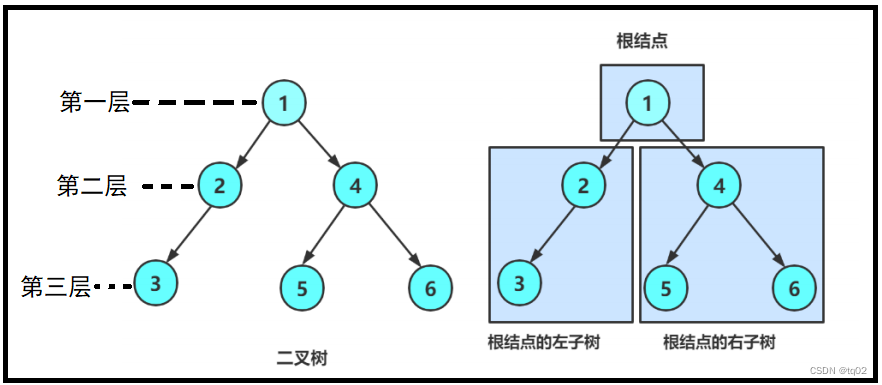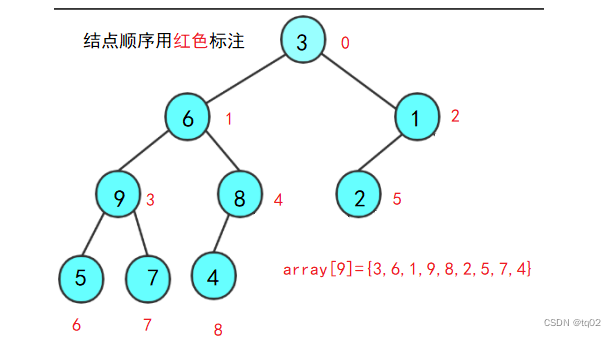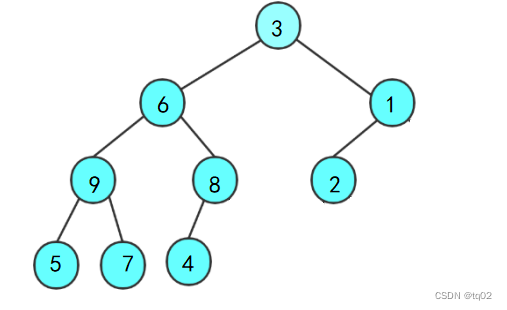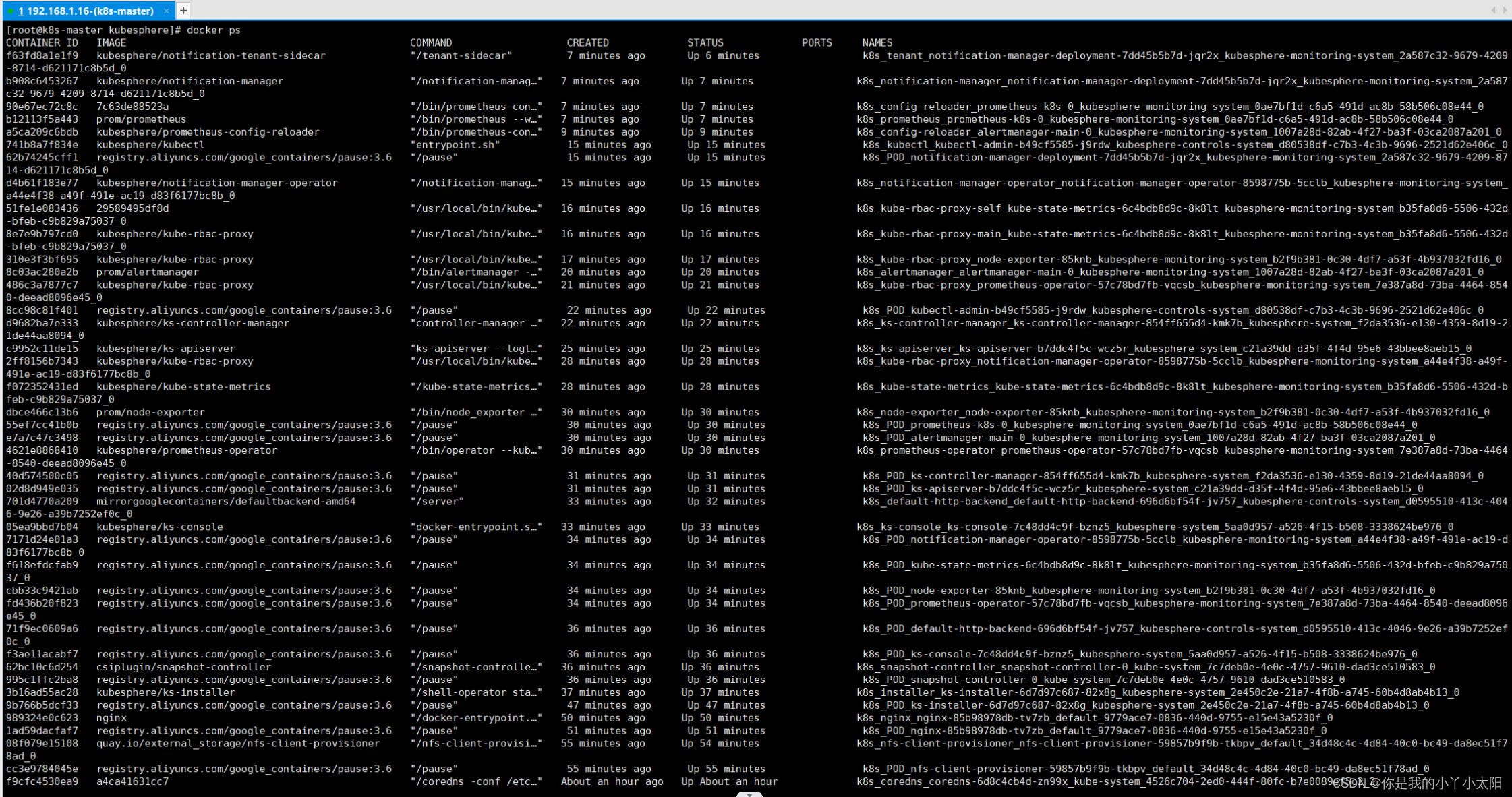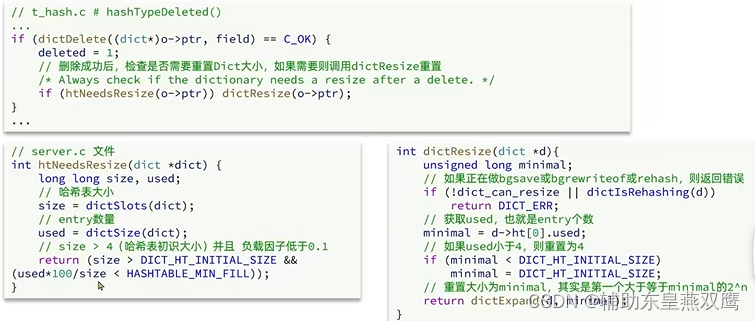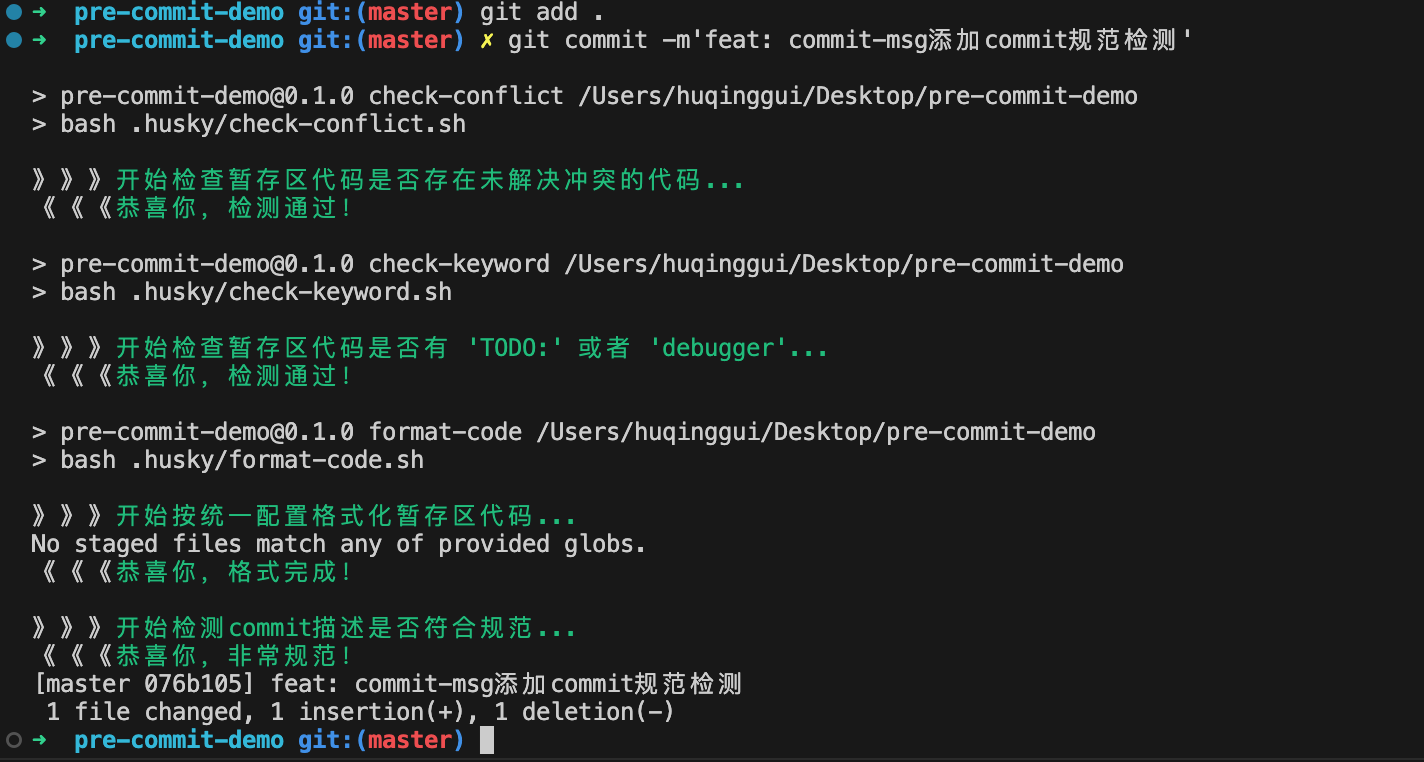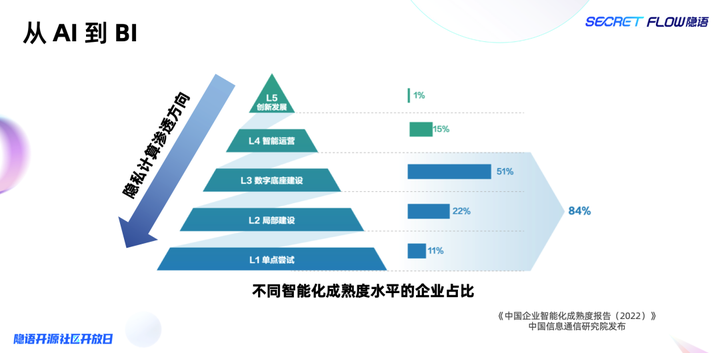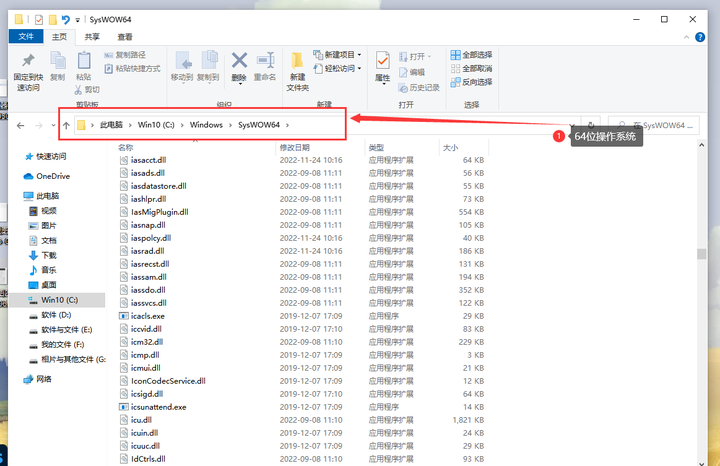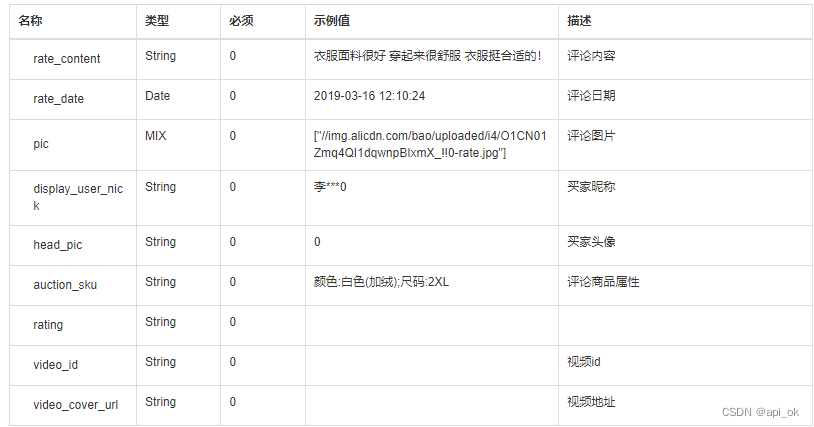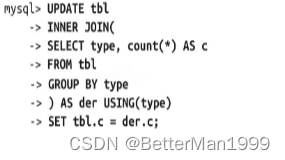目录
一、二叉树
1.1 二叉树概念
1.2 两种特殊的二叉树
1.3二叉树的性质
二 、二叉树的实现
2.1第一种 使用数组
2.2第二种 使用链表实现
2.2.1二叉树代码构建
2.2.2二叉树的基本操作
三、二叉树的三种遍历
3.1递归方法实现 前、中、后遍历
3.2非递归方法实现 前、中、后遍历
总结
😽个人主页: 博客-专业IT技术发表平台 (csdn.net)
🌈梦的目标:努力学习,向Java进发,拼搏一切,让自己的未来不会有遗憾。
🎁欢迎各位→点赞👍 + 收藏⭐ + 评论📝+关注✨
本章讲解内容:二叉树
来源于百度 使用编译器:IDEA
一、二叉树
1.1 二叉树概念
二叉树:一种 非线性 的数据结构,为结点的一个有限集合。
有限集合分类:1、或者为空
2、由一个根节点加上两棵别称为 左子树 和 右子树 的二叉树组成
重要知识:
1、树的深度或高度:树的最大层次。如上图:该二叉树高度为3。
2、结点的度:1个结点含有的子树个数。如上图:结点1的度为2,分别为2和4的左右子树。
3、父亲结点:拥有子树的结点。如上图:1便有2和4的子树,所以为父亲结点。
4、孩子结点:一个结点的的子树结点便为孩子结点。如上图:2是1的孩子结点。
5、叶子结点:无子树的结点。如上图:3、5、6的结点无子树,为叶子结点。
6、根结点:最开始的结点。如上图:1为根结点,每个二叉树只有一个根结点。
1.2 两种特殊的二叉树
1. 满二叉树 : 一棵二叉树,如果 每层的结点数都达到最大值,则这棵二叉树就是满二叉树 。也就是说, 如果一棵 二叉树的层数为K,且结点总数是 2^k-1 ,则它就是满二叉树。2. 完全二叉树 : 一棵深度为k的有n个结点的二叉树,对树中的结点按从上至下、从左到右的顺序进行编号,从0开始编号,编号为i(1≤i≤n)的结点与满二叉树中编号为i的结点在二叉树中的位置相同。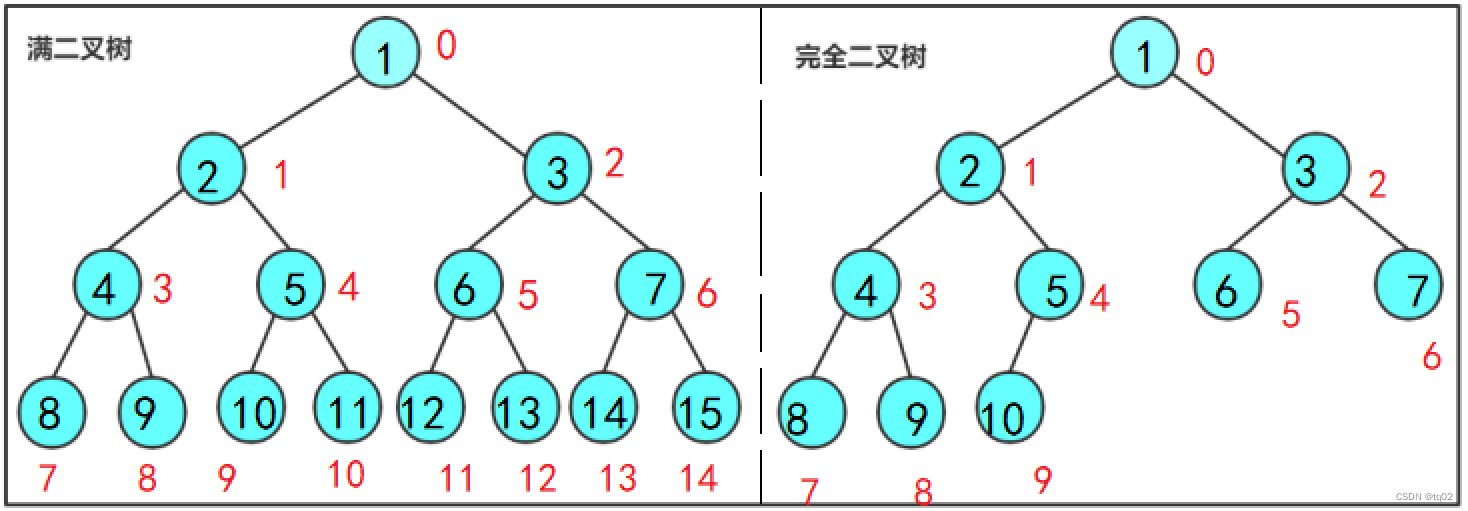
红色数字,代表的是结点序号,数组实现时使用
完全二叉树更为重要,因为堆便是在此基础上实现的。
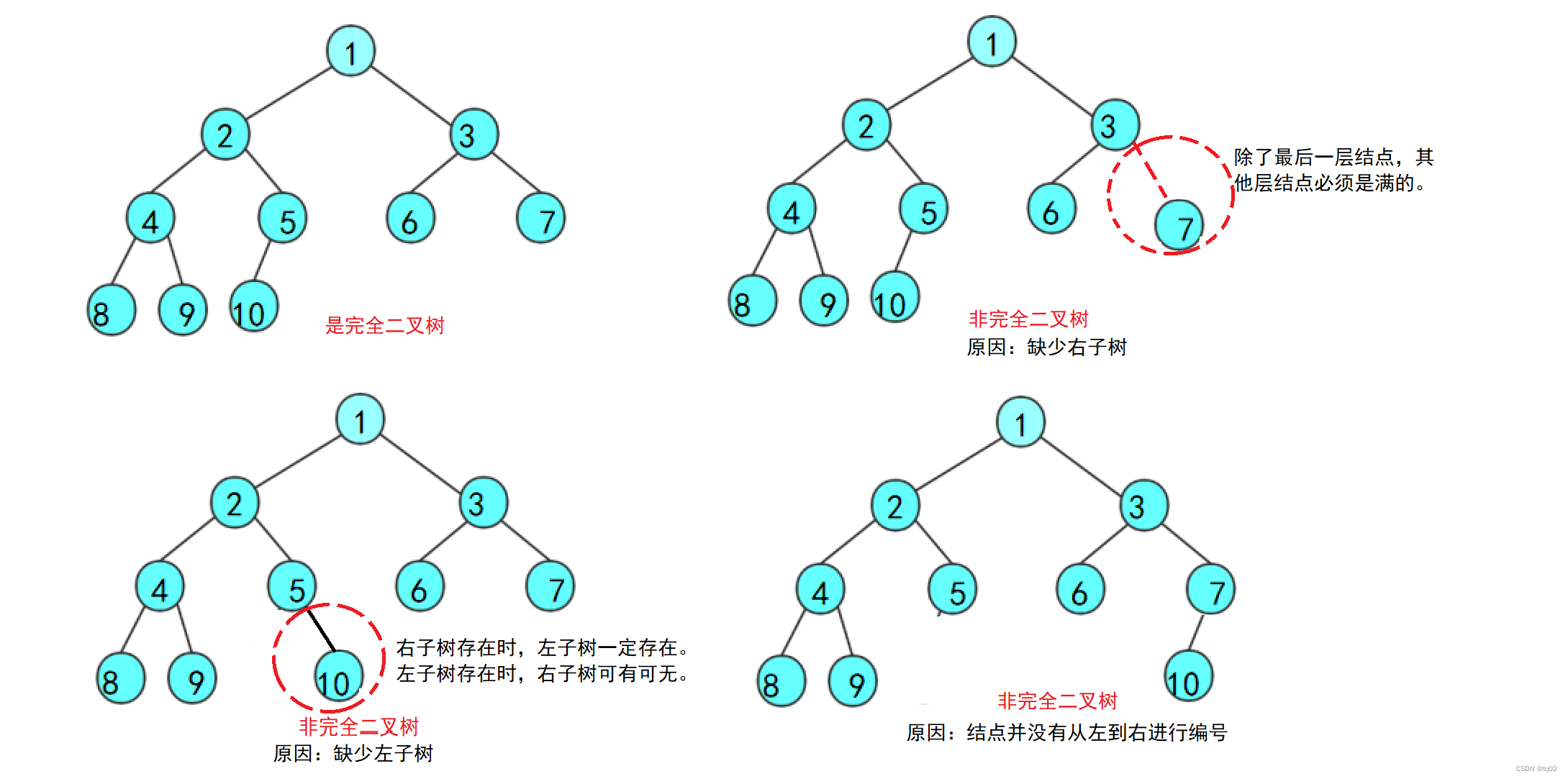
1.3二叉树的性质
二 、二叉树的实现
实现方法为2种。第一种: 使用数组,顺序存储二叉树结点。第二种: 使用链表的链式存储。此处我们使用链表实现
2.1第一种 使用数组
红色标注的是结点的下标值,一层一层放入array数组里。
特点:父结点=(孩子结点-1) / 2 此时的结点 等于 数组的下标值。
2.2第二种 使用链表实现
二叉树的链式存储:通过一个一个的节点引用起来的,因此可以通过链表的方式实现。
2.2.1二叉树代码构建
public class BinaryTree{
// 孩子表示法
class Node {
int val; // 数据域,代表结点的值
Node left; // 左孩子的引用,常常代表左孩子为根的整棵左子树
Node right; // 右孩子的引用,常常代表右孩子为根的整棵右子树
Node(){}
Node(int num)
{
this.val=num;
}
}
private Node root;
//构建二叉树
public void createBinaryTree(){
Node node1 = new Node(1);
Node node1 = new Node(2);
Node node1 = new Node(3);
Node node1 = new Node(4);
Node node1 = new Node(5);
Node node1 = new Node(6);
root = node1;
node1.left = node2;
node2.left = node3;
node1.right = node4;
node4.left = node5;
node5.right = node6;
}
// 获取树中节点的个数
public int size(Node root);
// 获取叶子节点的个数
public int getLeafNodeCount(Node root);
// 获取第K层节点的个数
public int getKLevelNodeCount(Node root,int k);
// 获取二叉树的高度
public int getHeight(Node root);
// 检测值为value的元素是否存在
public Node find(Node root, int val);
//层序遍历
public void levelOrder(Node root);
// 判断一棵树是不是完全二叉树
public boolean isCompleteTree(Node root);
}2.2.2二叉树的基本操作
获取二叉树结点个数:
public int size(Node root) { if(root==null) return 0; return size(root.left)+size(root.right)+1; }
获取叶子结点个数:
// 获取叶子节点的个数 public int getLeafNodeCount(Node root) { if(root==null) { return 0; } if(root.left==null&&root.right==null) return 1; return getLeafNodeCount(root.left)+getLeafNodeCount(root.right); }
获取第k层结点个数:
public int getKLevelNodeCount(TreeNode root, int k) { if(root == null) { return 0; } if(k == 1) { return 1; } return getKLevelNodeCount(root.left,k-1) + getKLevelNodeCount(root.right,k-1); }
获取二叉树高度:
public int getHeight(TreeNode root) { if(root == null) { return 0; } int leftH = getHeight(root.left); int rightH = getHeight(root.right); return (leftH > rightH ? leftH :rightH) + 1; }
检测是否存在value值:
public TreeNode find(TreeNode root,int val) { if(root == null) return null; if(root.val == val) { return root; } TreeNode leftL = find(root.left,val); if(leftL != null) { return leftL; } TreeNode leftLR = find(root.right,val); if(leftLR != null) { return leftLR; } return null; }
层序遍历:
public void levelOrder(TreeNode root) { Queue<TreeNode> queue = new LinkedList<>(); if(root != null) { queue.offer(root); } while (!queue.isEmpty()) { TreeNode top = queue.poll(); System.out.print(top.val+" "); if(top.left != null) { queue.offer(top.left); } if(top.right != null) { queue.offer(top.right); } } }
是否为完全二叉树:
public boolean isCompleteTree(TreeNode root) { Queue<Node> queue = new LinkedList<>(); if(root != null) { queue.offer(root); } while (!queue.isEmpty()) { Node cur = queue.poll(); if(cur != null) { queue.offer(cur.left); queue.offer(cur.right); }else { break; } } while (!queue.isEmpty()) { Node cur = queue.poll(); if(cur != null) { return false; } } return true; }
三、二叉树的三种遍历
二叉树有四种遍历方法:前序遍历、中序遍历、后序遍历已经层序遍历。
前序遍历:访问根结点--->根的左子树--->根的右子树 (根-左-右)
中序遍历:根的左子树--->根节点--->根的右子树 (左-根-右)
后序遍历:根的左子树--->根的右子树--->根节点 (左-右-根)
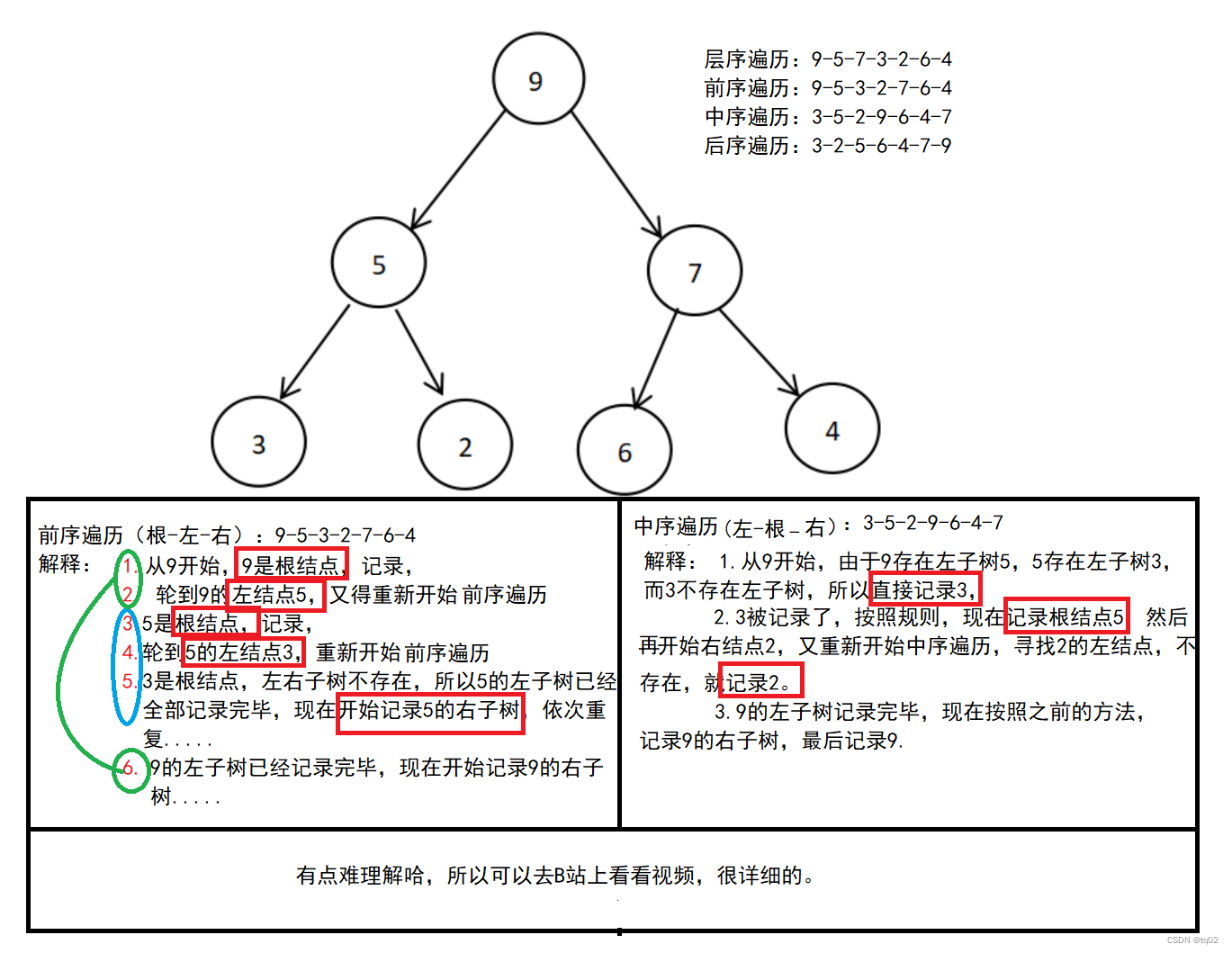
3.1递归方法实现 前、中、后遍历
前序遍历:
public void preOrder(TreeNode root) { if(root == null) return; System.out.print(root.val+" "); preOrder(root.left); preOrder(root.right); }
中序遍历:
public void inOrder(TreeNode root) { if(root == null) return; inOrder(root.left); System.out.print(root.val+" "); inOrder(root.right); }
后序遍历:
public void postOrder(TreeNode root) { if(root == null) return; postOrder(root.left); postOrder(root.right); System.out.print(root.val+" "); }
3.2非递归方法实现 前、中、后遍历
前序遍历:
public void preOrderIteration(TreeNode head) { if(head==null){ return; } Stack<TreeNode> stack=new Stack<>(); stack.push(head); while(!stack.isEmpty()) { TreeNOde node=stack.pop(); System.out.print(node.val+" "); if(node.right!=null) { stack.push(node.left); } if(node.left!=null){ stack.push(node.right); } } }利用栈的原理
中序遍历:
public void inOrderIteration(TreeNode head) { if(head==null){ return; } Stack<TreeNode> stack=new Stack<>(); TreeNode cur=head; while(!stack.isEmpty()) { while(cur!=null) { stack.push(cur); cur=cur.left; } TreeNode node=stack.pop(); System.out.print(node.val+""); if(node.right!=null) { cur=node.right; } } }
后序遍历:
public static void postOrderIteration(TreeNode head) { if (head == null) { return; } Stack<TreeNode> stack1 = new Stack<>(); Stack<TreeNode> stack2 = new Stack<>(); stack1.push(head); while (!stack1.isEmpty()) { TreeNode node = stack1.pop(); stack2.push(node); if (node.left != null) { stack1.push(node.left); } if (node.right != null) { stack1.push(node.right); } } while (!stack2.isEmpty()) { System.out.print(stack2.pop().val + " "); } }
总结
无论是链表实现,还是数组实现,各有其优势,不同情况使用,而不是代表链表实现比数组更好。二叉树里最重要的是完全二叉树,而在它基础上又实现了另一个数据结构,堆。在Java中更含有对应的实现类 PriorityQueue 。
